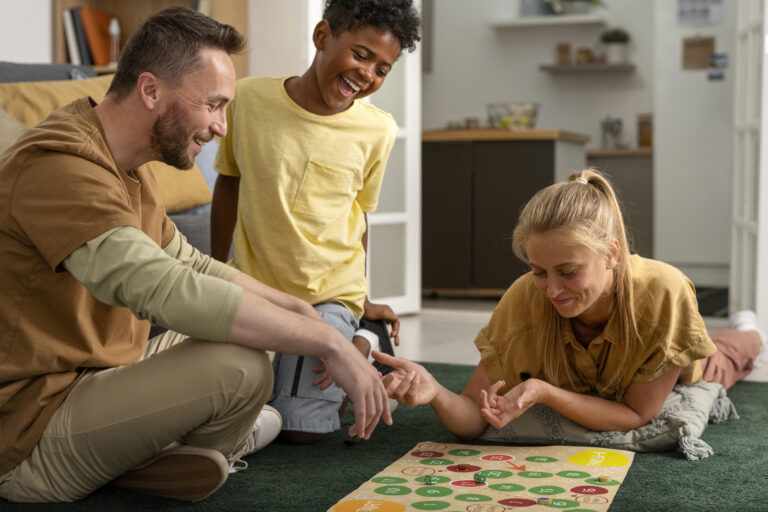If you feel like you repeat yourself 47 times before your child picks up a single sock—you’re not alone. Chores are one of the most common triggers for power struggles in families. But they don’t have to be.
You can get kids to help out—without yelling, nagging, or dangling rewards like candy. The key is to shift from control to collaboration. Here are seven peaceful, practical strategies grounded in psychology, child development, and real-life parenting.
1. Start Early and Set Clear Expectations
The earlier chores are introduced as a normal part of life, the more natural they feel. Even toddlers can put toys in a basket or help wipe a spill. What matters most is consistency—not perfection.
Let kids know that helping is what everyone in the family does, not a punishment or extra work. Use simple, clear language:
“In our family, we all pitch in. That’s how we take care of our home.”
Positive Discipline philosophy by Dr. Jane Nelsen emphasizes the value of shared responsibility and early involvement.
2. Make It Part of the Daily Routine
Kids are more cooperative when expectations are predictable. Tie chores to existing routines so they don’t feel like random demands.
For example:
- Feed the pet after breakfast
- Put toys away before screen time
- Set the table while dinner is being cooked
Use visuals (like a routine chart) or repetition to make it stick.
Visual schedules and predictable routines reduce friction, especially for younger or neurodivergent children.
3. Let Them Choose (Some) Tasks
Giving kids a sense of control makes a big difference. Offer simple choices:
- “Would you rather sweep or fold laundry?”
- “Do you want to set the table or clear it?”
When children feel ownership, they’re more likely to follow through.
According to Self-Determination Theory, autonomy is a key driver of internal motivation.
4. Turn It Into a Game or Challenge
Make chores more playful:
- Set a 2-minute timer and “beat the clock”
- Turn it into a quest: “Rescue the lost toys from under the bed!”
- Use a token or point system for completed tasks
That’s exactly what we’ve done with Family Hero—our game that turns real-life routines into weekly quests. Kids earn tokens, complete challenges, and learn responsibility while playing.
Gamification has been shown to increase task engagement and learning, especially in children.
5. Do It Together First
Model the behavior you want to see. Young kids especially need co-regulation—doing things with them before they can do them on their own.
Try:
- “Let’s wipe the table together”
- “I’ll do the plates, you do the cups”
This builds confidence and avoids overwhelm.
Dr. Laura Markham (Peaceful Parent, Happy Kids) recommends “scaffolding”—gradually helping kids learn new tasks while preserving connection.
6. Praise Effort, Not Just Results
Children respond best to encouragement that focuses on their effort and contribution, not on doing the task perfectly.
Try:
- “Thanks for helping out!”
- “You worked hard to fold those clothes.”
Avoid overly controlling feedback like “That’s not how you do it.” Focus on progress, not perfection.
7. Frame It as Contribution to the Family Team
Kids want to feel useful. When they understand that their help matters, it becomes more meaningful.
Talk about family as a team:
- “When you help sweep, it makes dinner time smoother for all of us.”
- “You’re a big part of what keeps this home running.”
This builds identity, not just compliance.
Fostering a sense of belonging and contribution is a central idea in Positive Parenting and Montessori education.
Final Thought
Getting kids to do chores doesn’t have to be a power struggle. When you offer structure, choice, and a little imagination, you’ll be surprised how cooperative—and even enthusiastic—kids can become.
Start with just one strategy this week.



